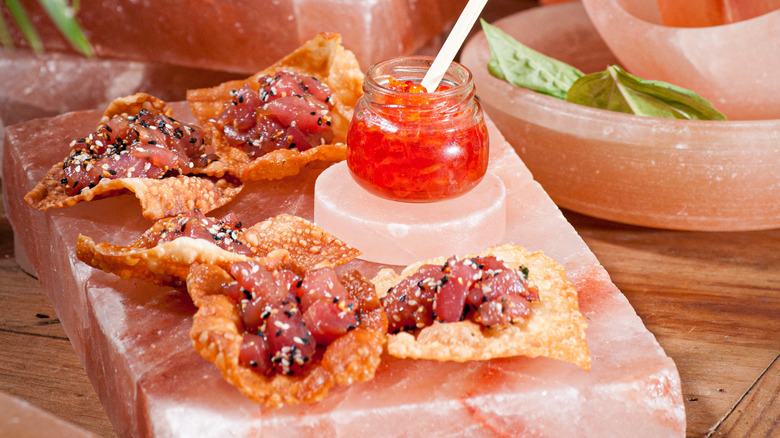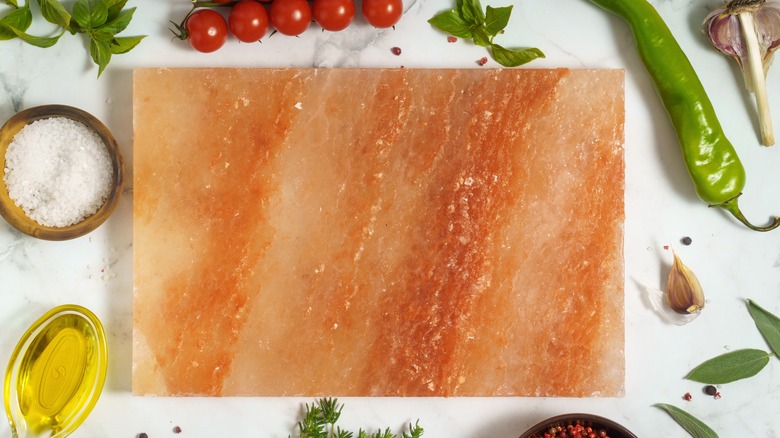For An Elevated Tuna Presentation, Try Serving It On A Salt Block
Apicius was on to something when he supposedly said: "We eat first with our eyes," per a 2016 study published in Brain and Cognition. In other words, presentation is everything when it comes to food, especially with regards to tuna, a common ingredient in sushi dishes.
Tuna exemplifies a seamless blend of simplicity and refinement. There's a meatiness and sweetness to it that makes it stand out from other types of fish, and there are several varieties to boot, such as albacore, bluefin, and yellowfin, per Foods Guy. But in presentation, it's a prime candidate for creativity and flamboyant plating. A quick image search may often yield an array of artistic expressions, ranging from sides to salads to tuna rolls next to colorful sauces.
Sushi Now adds that simplicity is key when plating, which may be emphasized by varying colors and the right levels of garnishes. On that note, the type of plate you use also matters. Sometimes, an intricate mirror is used. Other times, a chosen plate might be white or black to contrast the colorful hues of seared ahi tuna. But what about opting for something different — like a salt block — instead?
What's a salt block?
A Himalayan salt block is used for serving a wide range of foods, such as meat, cheese and crackers, sorbet, and of course, tuna, according to Salt Works.
Aesthetically, a salt block is large, pink, and in the shape of a thick square. It can be used in the oven, over a gas burner, and over an electric stove to cook, though the latter requires a wok ring or a metal spacer.
But perhaps one of its best uses is for presentation purposes, as the salt block is eye-catching and may help the tuna stand out compared to other plating vessels. You can also place the block in the refrigerator or freezer to make it cold.
One important aspect to note is that tuna, and other foods for that matter, may pick up some salt from the block, though Salt Works emphasizes that it's generally a small amount. The saltiness from the block will also only affect foods that are wet rather than dry. Toski Sands also implies that using a salt block is a great substitute for regular salt, adding that 82 trace minerals can be found within the blocks as well.

